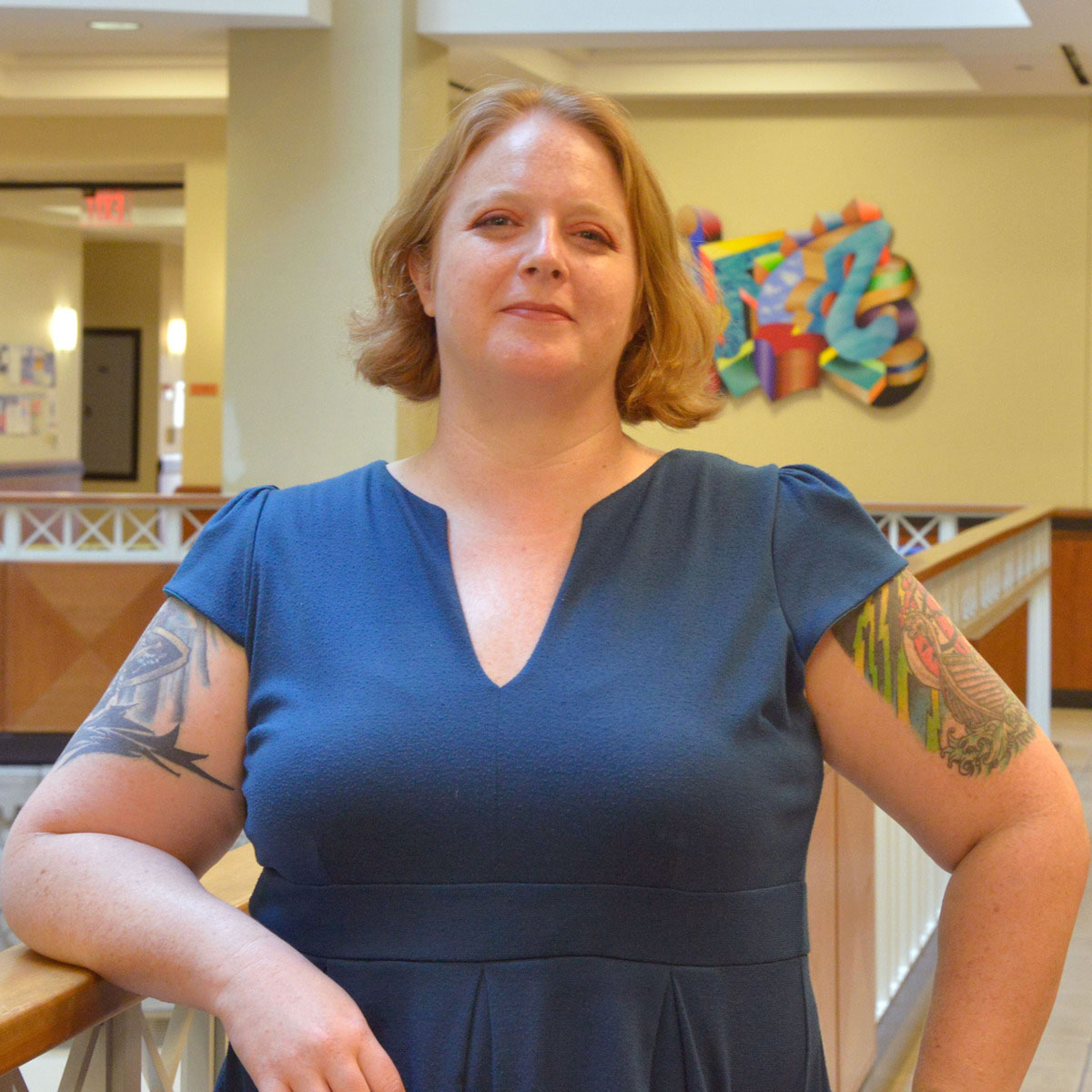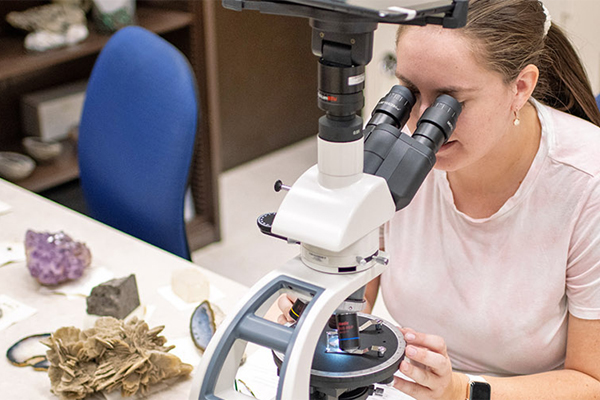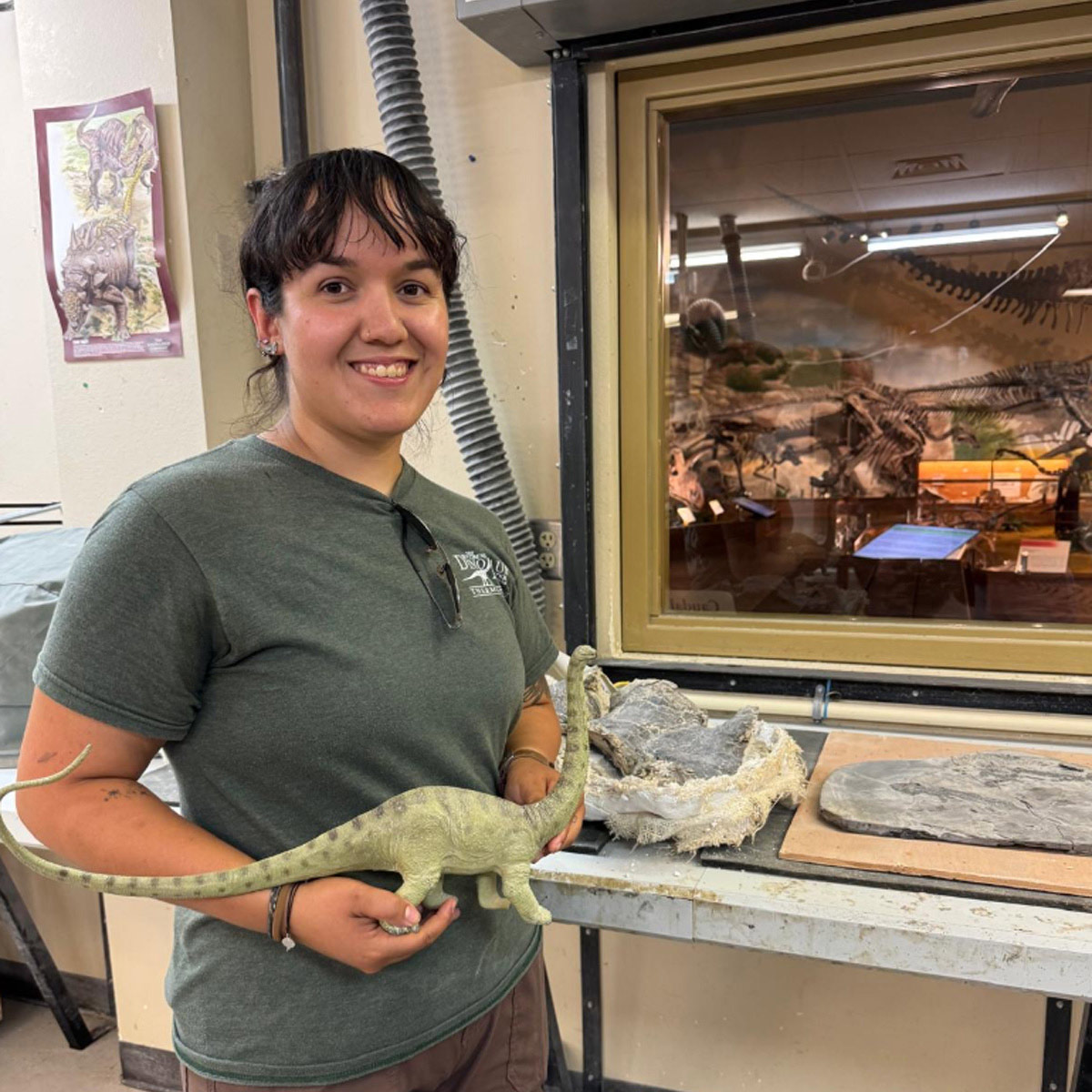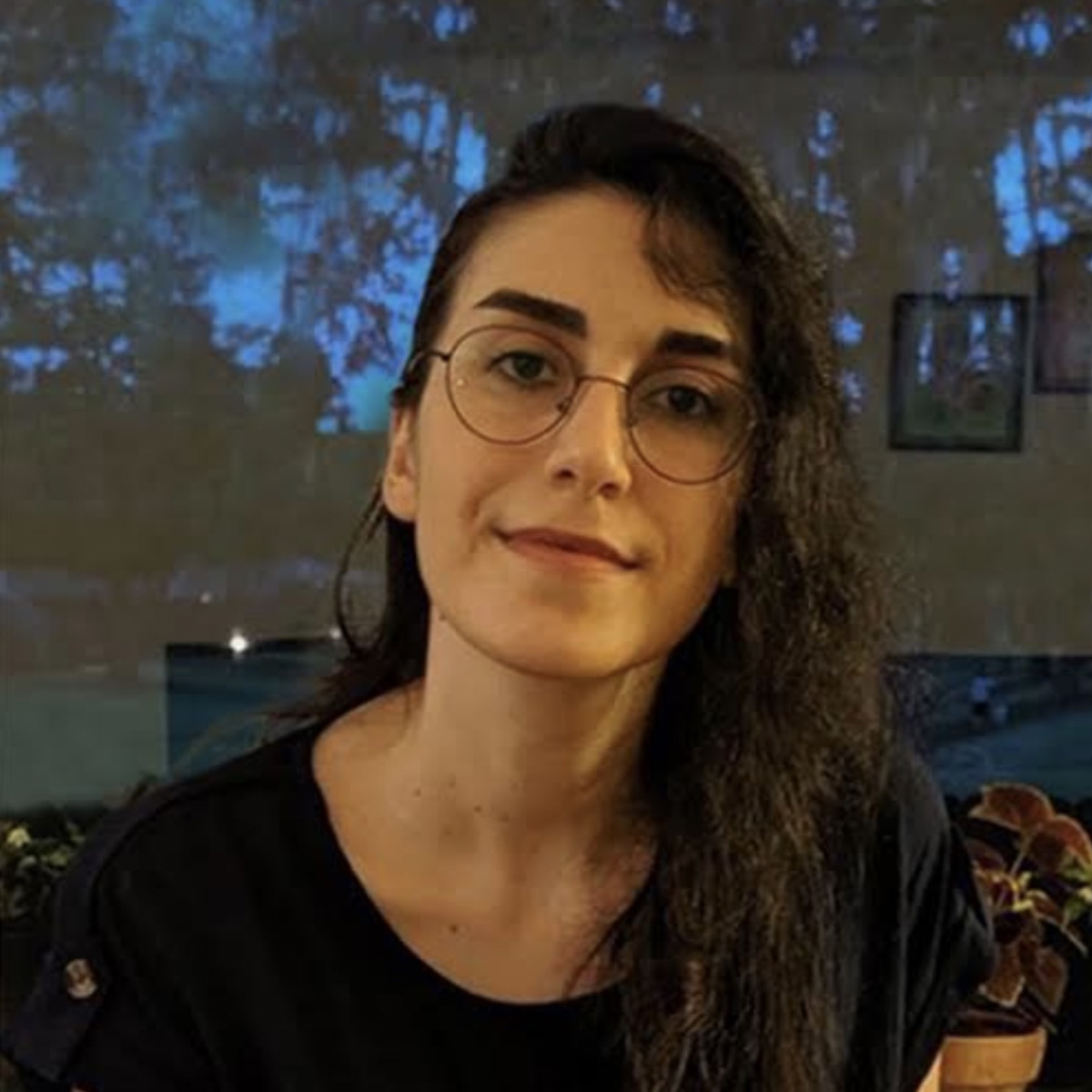Posted on December 5, 2022 by College of Sciences

Heidi Harwick
By Pelle Muñoz
Meet Heidi Harwick, an Environmental Geologist at Raba Kistner and a proud UTSA alumna. Heidi set her sights on UTSA during her time at Palo Alto College, where she began her pursuit of a B.S. in geology.
As a former intelligence analyst, Heidi has proven herself to be an adaptable and highly-skilled individual. Before coming to UTSA, she served in the Marine Corps for five years. In addition to her military service, Heidi also completed four years of experience as an Administrative Assistant at a geotechnical company in California.
Heidi knew she wanted to continue her education after undergrad, so she enrolled in UTSA's Geosciences (MS) program, which she completed in August 2022. During her time as a student, she worked at Educational Testing Service (ETS) and spent two years with UTSA's College of Engineering as a Project Specialist.
Heidi chose UTSA for its location and the convenience of being able to work while attending school. She also appreciates its emphasis on research, especially since students are encouraged to engage in research and manage their own projects. This has helped her learn how to process data and navigate new software. Given the unique challenges of her field, Heidi appreciated the opportunity to further refine her geophysics and field mapping skills.
"I love geophysics because of my prior opportunities to engage with it," said Heidi, "it's not easy, but it's interesting to look beyond the limit of the surface. There is so much going on below us."
Among the most important projects she completed was her thesis, "Geology and Structure of the UTSA Campus within the Balcones Fault Zone and Edwards Aquifer Recharge Zone in San Antonio, Texas." The project was a case study of the UTSA Main Campus, as it is within the Edward's Aquifer recharge zone. The aim of Heidi's thesis was to analyze the groundwater and how it moves across the surface and subsurface by observing interactions with faults and layered rock. Her interest is between two faults and the recharge zone, which flows into Leon Creek through fractures. By using integrated methods and conventional methodology, Heidi was able to collect more data and eliminate ambiguity in her work.
Recently, Heidi was grateful to receive the 2022 Society of Exploration Geologists (SEG) Near Surface Award, which included a grant of $2,550. Heidi is thankful to all the donors who made this grant possible, which provides support to students and aid for them to make key contributions to the field of near-surface geophysics.
Heidi valued the assistance of her peers within the geosciences program, "One thing that was important to my success was the support I received from my fellow grad students." She emphasizes the importance of making connections with people in the same program, especially considering the ever-increasing stresses of graduate school.
"It's a collective effort – I think the more brains you can get on something, the better," said Heidi. "Asking for help from advisors, checking in on graduate committee members, other professors in geosciences, and professors who have different areas of expertise is good. getting another external opinion is extremely valuable."
Recently, Heidi has accepted a job offer with Raba Kistner Inc., a premier engineering consulting, environmental and program management firm based in San Antonio. Heidi's new position as an environmental geologist for the firm will give her the opportunity to put her skills to use and gain more experience in her field.
"I'm very excited about this job as I'll get a chance to use my geology degree in a variety of areas –environmental, geotechnical, geology, and geophysics– on a variety of projects in the San Antonio Area."
Heidi is optimistic about what her future holds. Her new position with Raba Kistner Inc. is the launch of her career as a professional geologist and is the culmination of a professional goal she has had for years. It is the same hard work and dedication that earned Heidi her degree that will set a strong foundation for a successful career as a geoscientist.

Explore the EPS Department!
With research centers such as the Center for Advanced Measurement in Extreme Environments and the Institute for Water Research, Sustainability and Policy, students have access to diverse research opportunities to foster their education.
Recent EPS Spotlights
View More Spotlights



